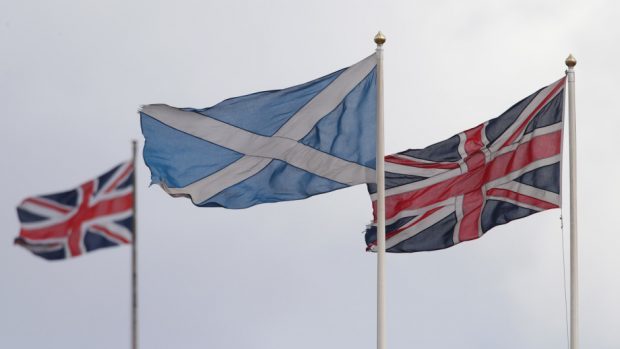The years since 2014 have been difficult for supporters of Scottish independence.
The SNP has maintained its dominance of the Scottish political scene, yet many of the party’s supporters are unhappy at what they see as a lack of progress on movement towards independence. After all, this is the stated reason for the existence of the party.
Instead, the SNP is becoming split between those who see a softly-softly approach as the best route to achieving its goal, while others believe the party is blind to seeking alternatives to its chosen referendum-by-agreement-with-Westminster path.
Mind you, what those alternatives might be has never been fully explained. A Catalan-style unofficial referendum? A consultative vote? A unilateral declaration of independence? All of these options would face major problems.
There has long been a belief among those who oppose the gradualist approach favoured by the current party leadership that it is a fruitless route. Ask Westminster for permission to hold another referendum, and they know what the answer will be, they argue. Indeed, UK Government ministers from Boris Johnson down have already said that they won’t agree to one. So, is that the end of the matter?
I don’t believe so.
First Minister Nicola Sturgeon said last year that her aim was to hold a referendum in 2020. The coronavirus pandemic put paid to that wish, not that it was ever likely to happen in any case. But perhaps we should look at one or two interesting opinion polls.
The two most recent surveys on Scottish independence both showed support at more than 50% – in fact, one was at 54%. But even more importantly from an independence perspective was polling carried out south of the Border. That put support for English independence – in other words, getting rid of those troublesome Scots and Northern Irish (I’m not sure how much Wales plays into the English psyche) – at 35%. And more significant still was the support for English independence among Conservative voters at 49%.
If that trend were to continue, with support for English independence among Conservative supporters growing, what then would be the view of the Conservative Party hierarchy? It is, of course, properly titled the Conservative and Unionist Party, although the “Unionist” part is seldom used south of the Border. In Scotland though, it is trumpeted on a regular basis, though historically this was more to do with attracting a Scottish Protestant, Northern Irish Unionist-supporting vote than having anything to do with the union between Scotland and England.
The Scottish Unionist Party was founded in 1912 to oppose Irish independence and defend the Irish Union. It had nothing to do with the 1707 Act of Union between Scotland and England. Indeed, until it amalgamated with the Conservative Party in 1965, most Conservative candidates in Scotland stood as Scottish Unionists.
In fact, both Andrew Bonar Law and Alec Douglas-Home were UK Conservative prime ministers, despite both being elected on a Scottish Unionist ticket. To confuse matters even further, when their candidates contested local council elections, they stood as Progressives. It should be stressed that the present-day Scottish Unionist Party, which is on the fringes of Scottish politics, has nothing whatever to do with the Conservatives, and is basically a front for the Orange Order.
Today, while it is still firmly supportive of keeping Northern Ireland within the United Kingdom, the main focus within the Scottish Conservative Party has changed, and when they talk about being Unionists, they are talking about defending the 1707 Act of Union. But what sway do Scottish Conservatives actually have over the party as a whole?
In UK terms, they are a relatively small fraction of the party membership. Do they really believe that if the majority of Conservative voters in England decided that English independence was the best future for their country that the views of the electorate would be ignored by the party leadership? Of course they wouldn’t. Mr Johnson has no political need for the handful of MPs which he has or is likely to win in Scotland. And the prospect of a solid, built-in English Conservative majority would also surely be a major attraction to him.
David Cameron, despite allowing the last referendum on Scottish independence, was undoubtedly philosophically supportive of and a true believer in the benefits of the United Kingdom. Frankly, Boris Johnson seems far more likely to bend with the political wind, taking the party in whichever direction is politically beneficial to his own position. And if that means saying goodbye to Scotland, so be it. Unlike all previous leaders of his party, he may prefer personal political survival over concern at being the prime minister who oversaw the end of the United Kingdom.
There is every chance that the SNP will try to use next year’s Scottish parliamentary election as a proxy vote on holding a referendum. With an SNP majority in that election, and the polls in England on independence continuing in the same direction, the prospect of Boris Johnson granting a Section 30 Order to allow Nicola Sturgeon her wished-for vote may not be as far-fetched as it once appeared.
Campbell Gunn is a retired political editor who served as special adviser to two first ministers of Scotland

